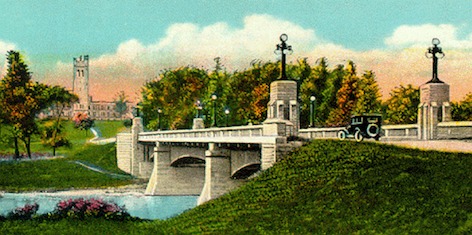Bridging Classroom and Community: Languages and Cultures in Action links undergraduate students from the University of Western Ontario (UWO) to community members from the Arabic, German, Hispanic, Italian and Japanese communities in London, Ontario, Canada in order to create bridges between learning and mobilizing knowledge through Community-Engaged Learning (CEL) projects. While the focus in the classroom is on topics such as identity and memory, understanding and misunderstanding, and on community and social justice, the CEL component seeks to document community member experiences of learning and maintaining language and cultural heritage. The idea is to give voice to the stories of Arabic-Canadians, German-Canadians, Hispanic-Canadians, Italian-Canadians and Japanese-Canadians in London, to showcase individuals in these communities through the public exhibition of their portraits, and to bring these immigrant communities into a new relationship with each other by documenting their histories in the vibrant present. We are very fortunate to partner with the German Language School, the Italian Language School, the Japanese Language School, the Spanish Language School, the German Canadian Club, the Italian Canadian Archives Project, the Canadian Latin American Association, Latino London, the London Cross Cultural Learners Centre and Innovation Works. We hope to continue this project also facilitated by the Western Student Success Center over the next years.
The initial course took place in the fall of 2015 and was developed by Angela Borchert and Victoria Wolff. The next course took place with Angela Borchert in the fall of 2017, followed by a course with Victoria Wolff supported by Angela Borchert in the fall of 2018. The process for the courses was the following: Over the term, each student met several times with a partner from the community, so that the students could listen to and document community member stories. As part of their engagement, students also participated in the activities of an affiliated community organization. Using digital tools, students then worked to create a unique portrait – a visual/verbal representation – of the individual or family of a video. Both the community partner and the student decided on the topic, length, and the type of portrait. The time line for the project was that the students met with their partners in October getting to know each other, while the students practiced the digital tools in the class, and then created a draft portrait by mid-November for peer review in order to complete the portrait by December. Each portrait is found under the community collection and is connected with other portraits through the tag cloud. The public online exhibition uses Omeka. The site was initially hosted by the CulturePlex, Department of Modern Languages and Literatures, and has now found its home at Western Library.
